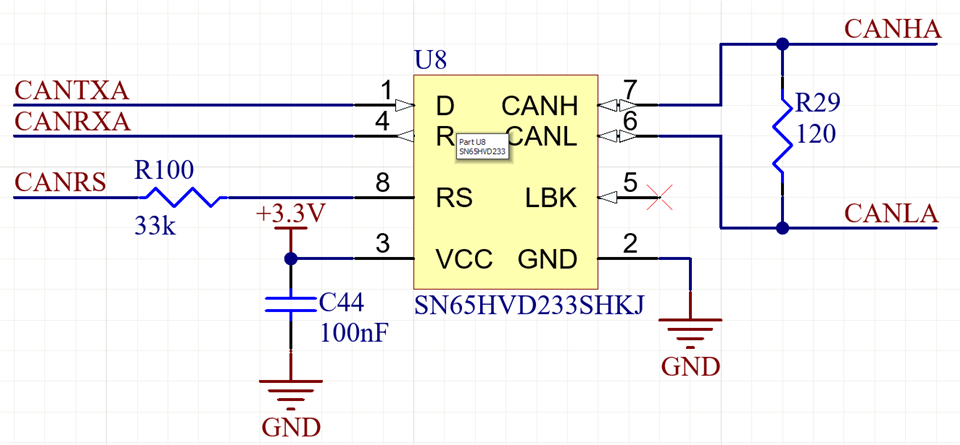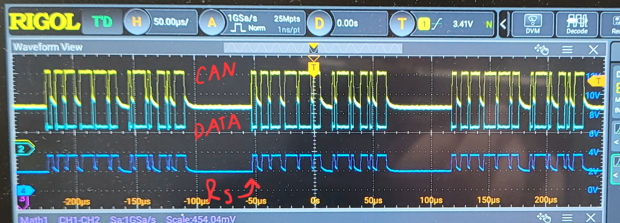Problem Statement
A high rate of failure has been observed while using the SN65HVD233SHKJ transceiver chip in one of our designs. The characteristics of failure appear to be the same on most failed parts, detailed below.
Here's our circuit:

CANTXA and CANRXA are connected to their respective pins on the processor. CANRS is connected to a GPIO and is always pulled low.
Observations
-
During high temperature testing, some of our devices will cease to communicate over CAN bus. The temperature at which this happens varies (70C to 160C), and it only happens to some parts. We have seen some correlation between transceivers failing, e.g., a batch of three all failed at the same time during a high temperature cycle. All three devices were on independent CAN busses during testing.
-
During this failed state, data from the CAN bus is successfully translated to logic levels and output on the R pin of the transceiver chip
-
The processor successfully interprets the data and sends a corresponding ACK signal to the D pin of the transceiver chip
-
The ACK signal does not make it onto the CAN bus, the transceiver chip does not drive the bus to the “dominant” state
-
On faulty transceiver chips, the Rs pin appears to have CAN data, as seen in the scope capture below. Note that we use a 33kOhm resistor from Rs to ground, indicating that the Rs pin is sourcing about 60uA to generate about 2V on the Rs pin (when there’s no CAN traffic). If we short the Rs pin to ground (bypassing the 33kOhm resistor), the chip starts working as expected. When shorting the Rs pin to ground, it sinks about 395uA.

-
On good transceiver chips, the Rs pin generates a steady 1.1Ve across a 33kOhm resistor to ground, indicating that the Rs pin is sourcing about 33uA. When shorting the Rs pin to ground on a good transceiver, the chip sinks about 268uA.
Questions
-
Do our observations indicate that the transceiver chip is damaged? If so, what might be causing the damage?
-
Omitting the resistor on Rs and connecting it to ground causes these failed parts to operate. Is this a valid long-term solution?

